Virtual reality technology has been with us for over 50 years, but only now is its adoption at its peak, and companies and individuals are starting to use it to its full potential. Generally speaking, this is a headset that can be standalone (without a PC) or you can connect it to a hardware-powerful PC or a gaming console like the PlayStation 4.
The goal of virtual reality is to present a fictional digital world in an advanced simulation, including sensing your movement. It will allow you to peer into the far reaches of our planet, try out extreme experiences or play really intense games, and finally relax with surrounding movies.
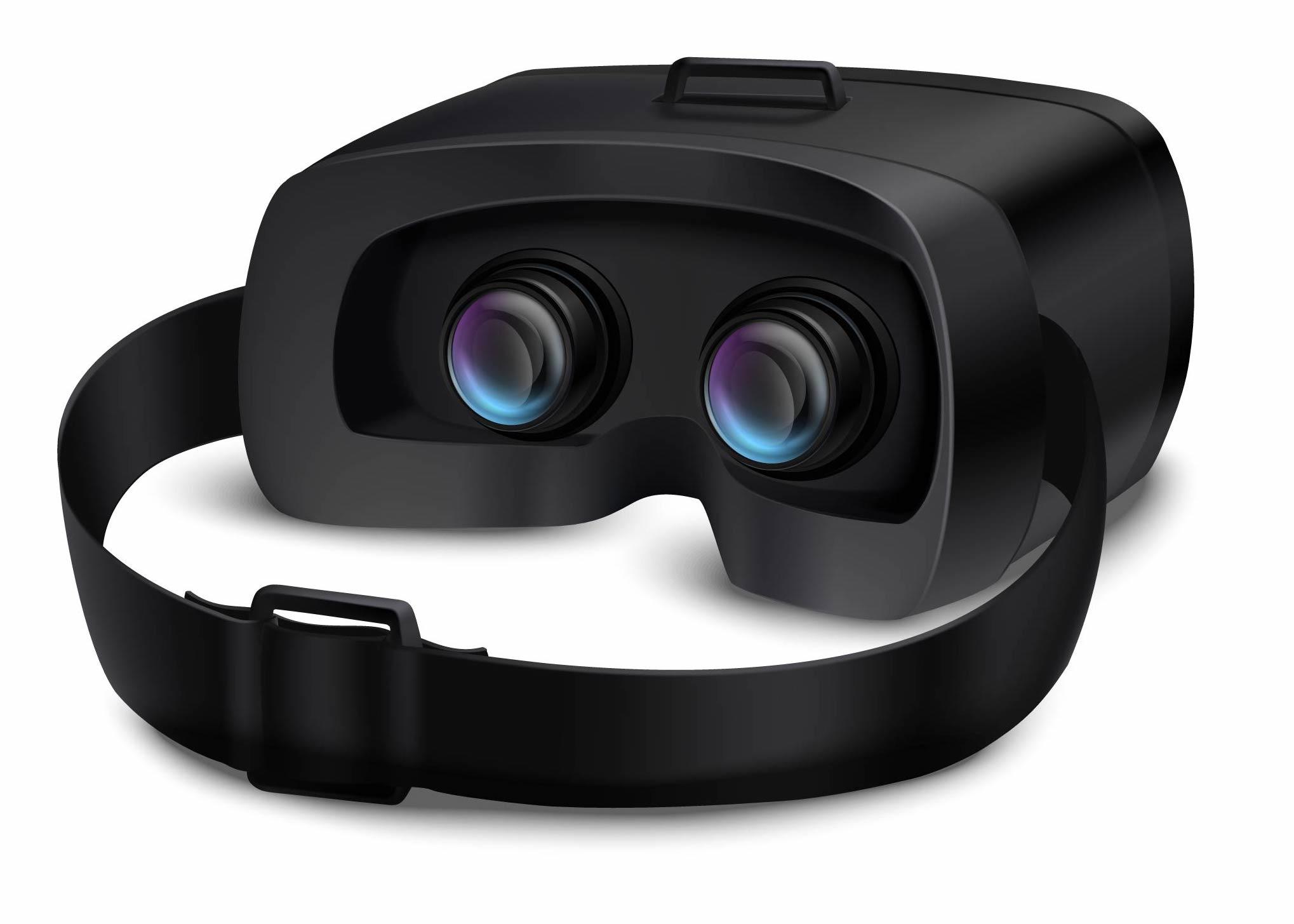
According to a new forecast from ARtillry Intelligence, the consumer VR market is expected to grow from $2.7 billion last year to $9.2 billion in 2022, a 240% growth rate. Consumer VR accounted for 88% of all VR revenue last year and is still expected to be at 74% market share by 2022
Chapter 1
Virtual reality and its history
Virtual reality emerged in the 1960s. The first references to more modern concepts of virtual reality come from science fiction films produced a few decades later.
Sensorama (1962)
The first mention of virtual reality as we know it today can be considered the concept of the so-called „Experience Theater“ in the 1950s by Morton Heilig. It was a concept that would stimulate the 4 senses of the viewer according to the scene. Based on this vision, Heilig built a prototype in 1962 called Sensorama, which allowed the perception of smell in addition to image and sound when screening short films.
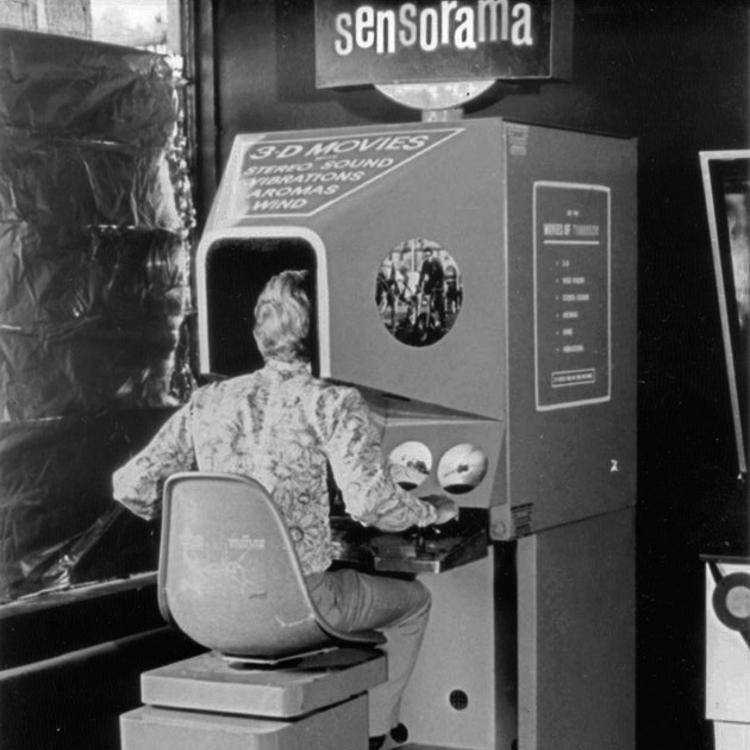
Sensorama was the first concept to use „virtual reality“
Sensorama was originally considered for arcade use, but the machine ended up being too complex. It was also presented to companies like Ford and International Harvester as a potential showroom, but they found no takers. At the time, it was almost impossible to find investors, so Sensorama was left standing in the prototype stage.
Sword of Damocles (1968)
In 1968, Ivan Sutherland, with the help of his students, including Bob Sproull, created what was widely regarded as the first head-mounted imaging system for use in immersive simulation applications.
It was primitive in terms of both user interface and visual experience, and the hardware the user wore was so heavy that it had to be suspended from the ceiling. The graphics that made up the virtual environment were simple 3D objects. The huge appearance of the device inspired its name, The Sword of Damocles.
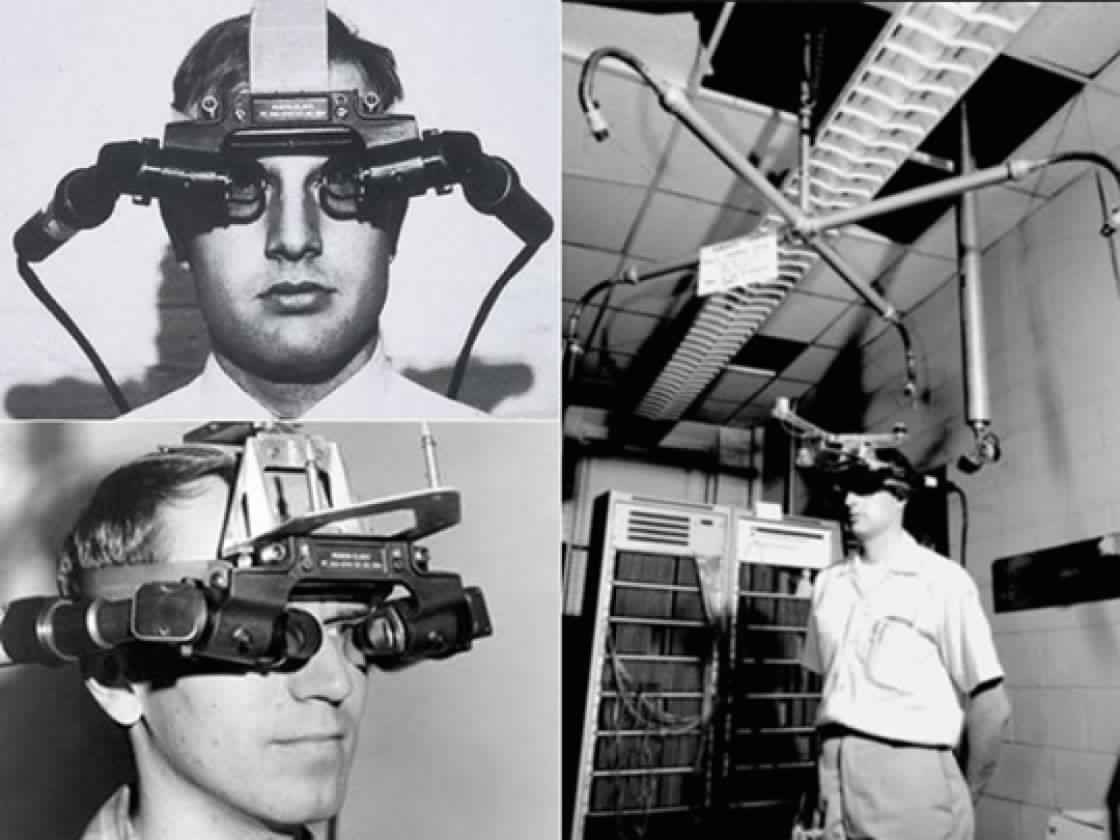
The Sword of Damocles can be considered as a kind of first „VR headset“.
Early period (1970 – 1990)
During this period, the virtual reality industry was mainly used in the medical, aerospace, automotive and military sectors. During this period, MIT created the Aspen Virtual Map in 1978, a rough virtual tour that allowed users to wander the streets of Aspen in one of three modes (summer, winter, and polygons).
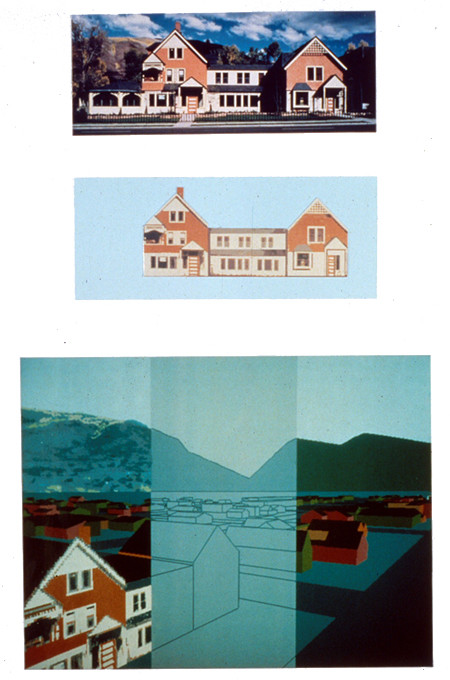
Aspen map converted to virtual reality.
In 1979 Eric Howlett developed the LEEP (Large Expanse Extra Perspective) optical system. The combined system produced a stereoscopic image with a wide enough field of view to create a convincing sense of space. Users were impressed by the sense of depth (field of view) in the scene and the corresponding realism.
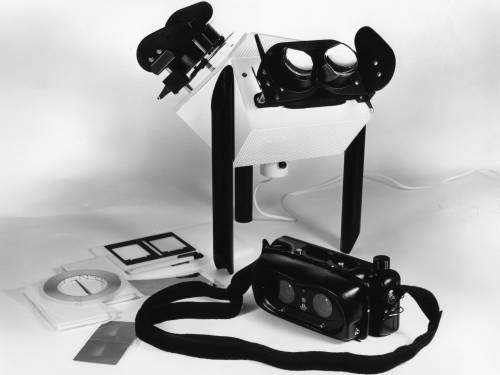
VR headset from 1983 by LEEP VR.
Source: Leepvr.com
The original LEEP system was redesigned in 1985 at NASA’s Ames Research Center for their first virtual reality installation, Scott Fisher’s VIEW (Virtual Interactive Environment Workstation). The LEEP system laid such a cornerstone for most modern virtual reality rigs as we know them today.
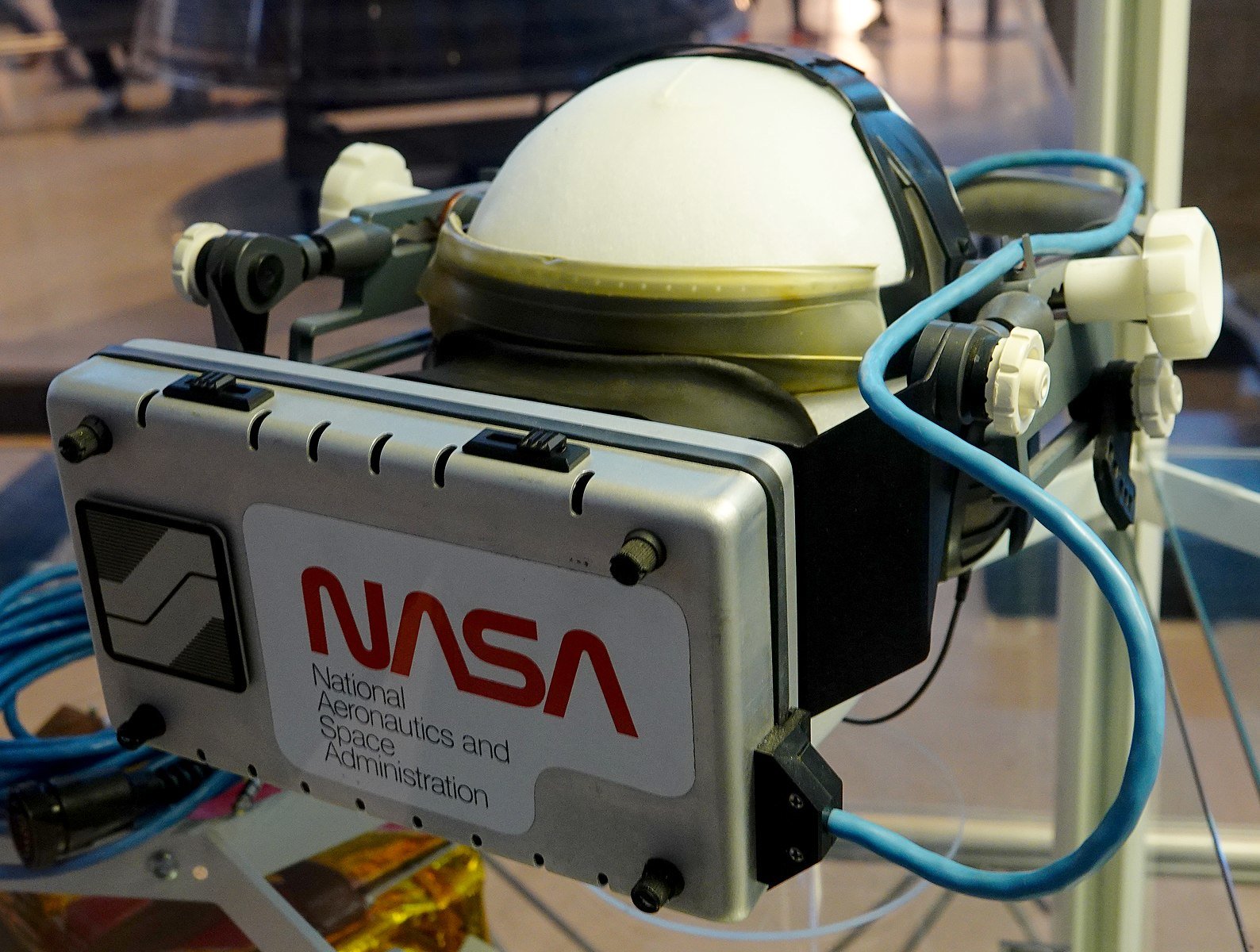
NASA headset Ames from 1985
Source: Wikipedia.org
In the 1980s, the term „virtual reality“ was popularized by Jaron Lanier, one of the main pioneers of VR. Lanier founded VPL Research in 1984. This company came up with several groundbreaking products such as the DataGlove (glove with tracking), the EyePhone (VR headset), AudioSphere (3D audio) and many more.
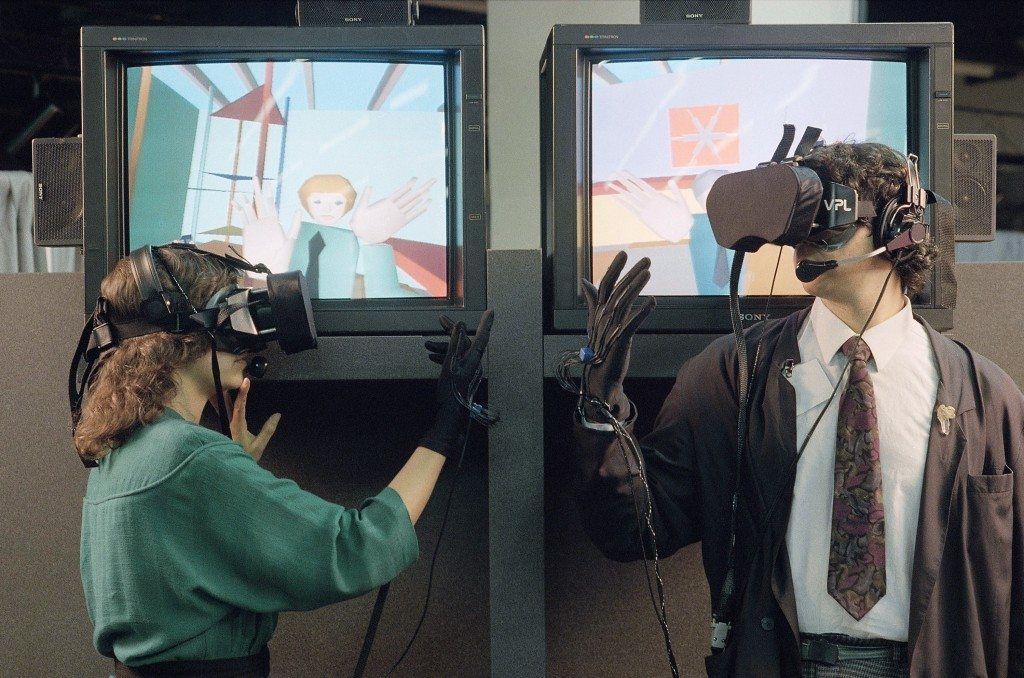
VR headset and DataGlove from VPL Research
Source: Flashbak.com
In 1988, a project from Autodesk was the first to implement VR on a low-cost personal computer. The project’s leader, Eric Gullichsen, left in 1990 to set up his own company, Sense8, and developed WorldToolkit, the first virtual reality SDK that offered the first real-time graphics mapping on a regular PC and was widely used across the industry.
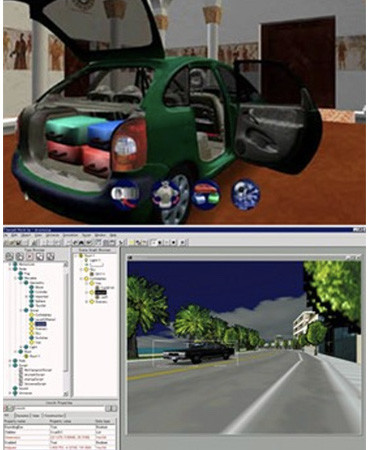
World Toolkit SDK enabled programmers to create VR environments
Commercialization of VR (1990-2000)
By the 1990s, VR headsets were available for mainstream users. In 1991, Sega announced their Sega VR headset aimed at arcade games on their Mega Drive console. The headset used an LCD screen, a stereo headset, and a tracking system that allowed the system to react to the user’s head movements.
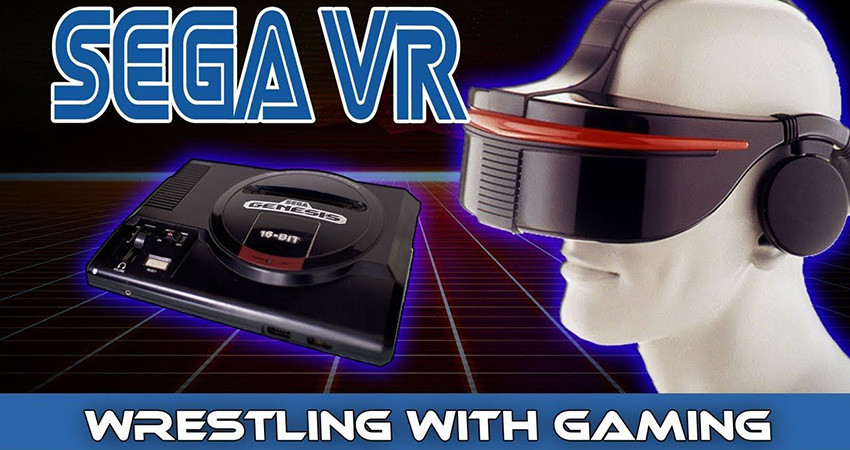
Sega VR headset and 1991 Mega Drive console
In the same year, Virtuality launched a virtual multiplayer world and became the first mass-produced multiplayer VR entertainment system to launch in multiple countries, including a dedicated VR arcade at the famed Embarcadero Center shopping mall. The cost was around $73,000 for one device, which consisted of exoskeleton gloves and a VR headset. This device provided one of the first immersive VR experiences.
The same year, a group of VR pioneers led by Calorina Cruz-Neira from the Electronic Visualization Laboratory created the first cubic room – CAVE (Cave automatic virtual environment). The project began as Cruz’s master’s thesis and involved an optional (projected) environment, allowing people to see their own bodies as well as those of other users.
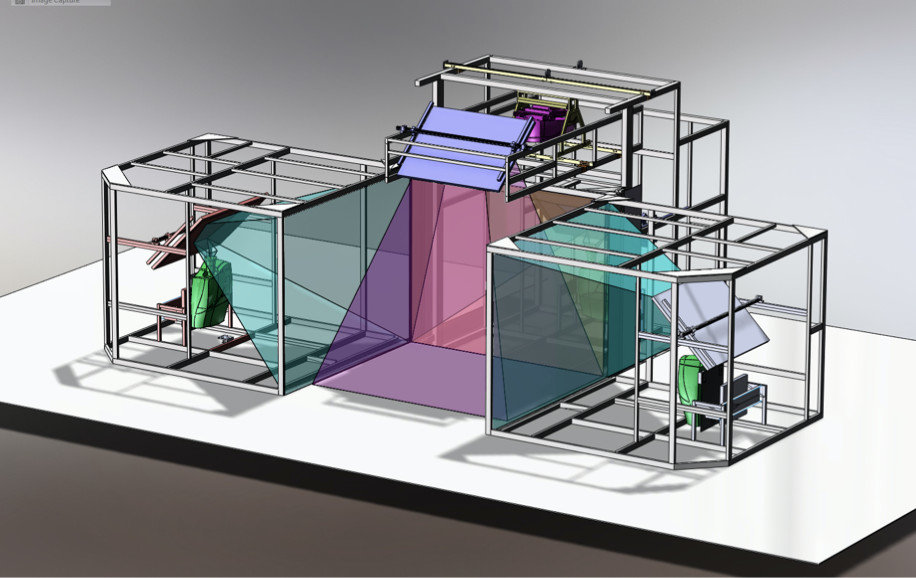
Representation of the functionality of the CAVE cubic room
In 1992, Nicole Stenger created the Angels project, which represented the first real-time interactive film where interactions were made using DataGloves and a high-resolution headset. That same year, Louis Rosenberg created Virtual Fixtures, a virtual training system at Armstrong Labs in the US Air Force using the entire upper body exoskeleton to enable physically realistic mixed reality in 3D. The system allowed overlaying physically real 3D objects with virtual ones registered with the user’s direct view of the real world, producing the first true augmented reality experience allowing sight, sound and touch.
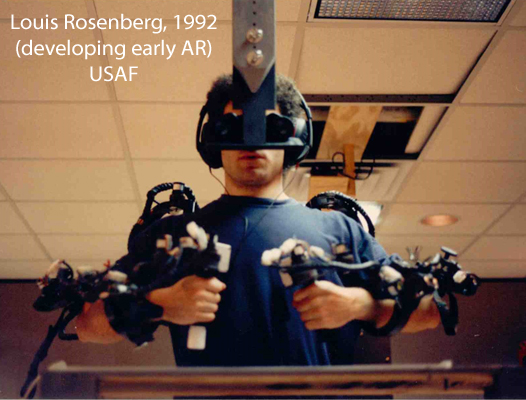
Virtual Fixtures as the first AR project from 1992
Source: Wikipedia.org
In 1994, a new product was released by Sega, the Sega VR-1. A motion simulator in entertainment centers with SegaWorld arcades. The Sega VR-1 tracked head movement and featured graphics in stereoscopic design.
In 1995, Nintendo introduced the Virtual Boy, a console that featured a 270-degree room experience called VET (Virtual Environment Theatre.) This console practically delivered more enjoyment than a television, but even so, the Virtual Boy became Nintendo’s worst-selling product with 770,000 units sold.
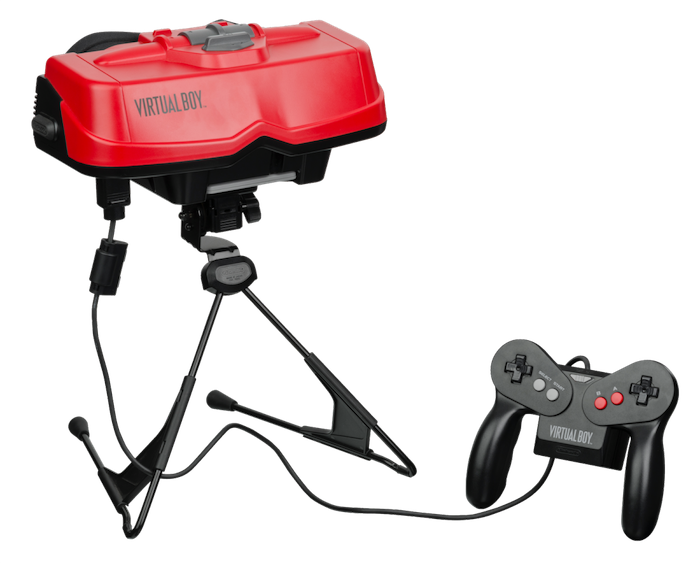
Nintendo Virtual Boy z roku 1995
In 1999, entrepreneur Philip Rosedale founded Linden Lab to publish the still-running and well-known Second Life game. For those of you who haven’t heard of the game, it’s a virtual world where you can meet friends, do all sorts of activities, or buy a tile and start your own business. Users earned approximately $60 million in 2015.
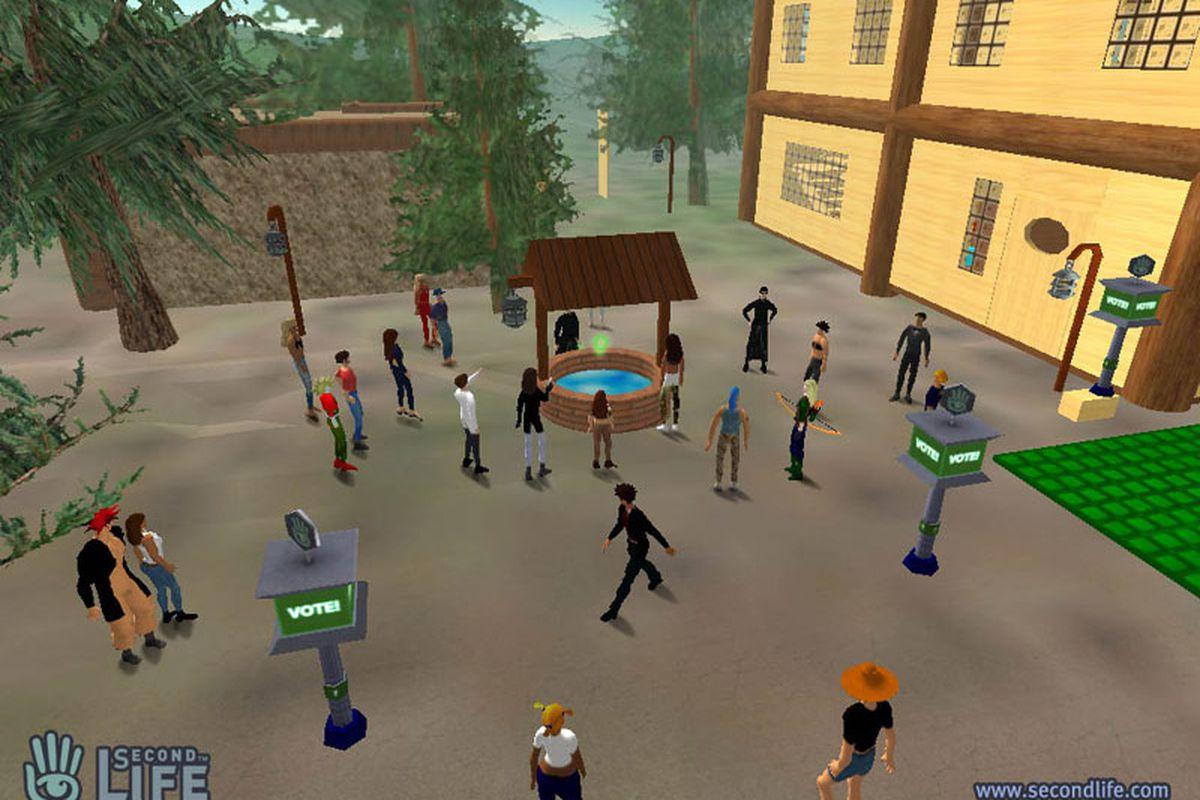
An excerpt from Second Life, launched in 1999 and still running today…
21st century
Since 2000, the VR field has been marked by large investments and commercialization of VR technology in general. In 2001, the SAS Cube project (SAS3) became the first PC-based cubic room produced by Z-A Production. The SAS library gave birth to the Virtools VR Pack, which allowed programmers to create 3D objects for the purpose of CUBE rooms or for VR headset environments.
In 2007, Google came up with its Street View product, a service that shows 360 panoramic views of roads, building interiors, and remote areas. Thus, we can navigate places in Street View without physically being there. In 2010, Google introduced stereoscopic mode.

Sample Google Street View preview
Source: Globema.cz
.In 2010, as a 17-year-old, Palmer Luckey designed the first prototype of the Oculus Rift VR headset in his parents‘ garage. This prototype was only capable of rotational tracking but boasted a 90-degree field of view that no one else had come up with until then.
In 2012, the Rift was unveiled for the first time at Carmack’s E3 gaming expo. In 2014, Facebook bought Oculus VR for what was listed at the time as $2 billion, but later turned out to be a more accurate value of $3 billion. That purchase came after the first development kits were ordered through Oculus‘ Kickstarter product in 2013.
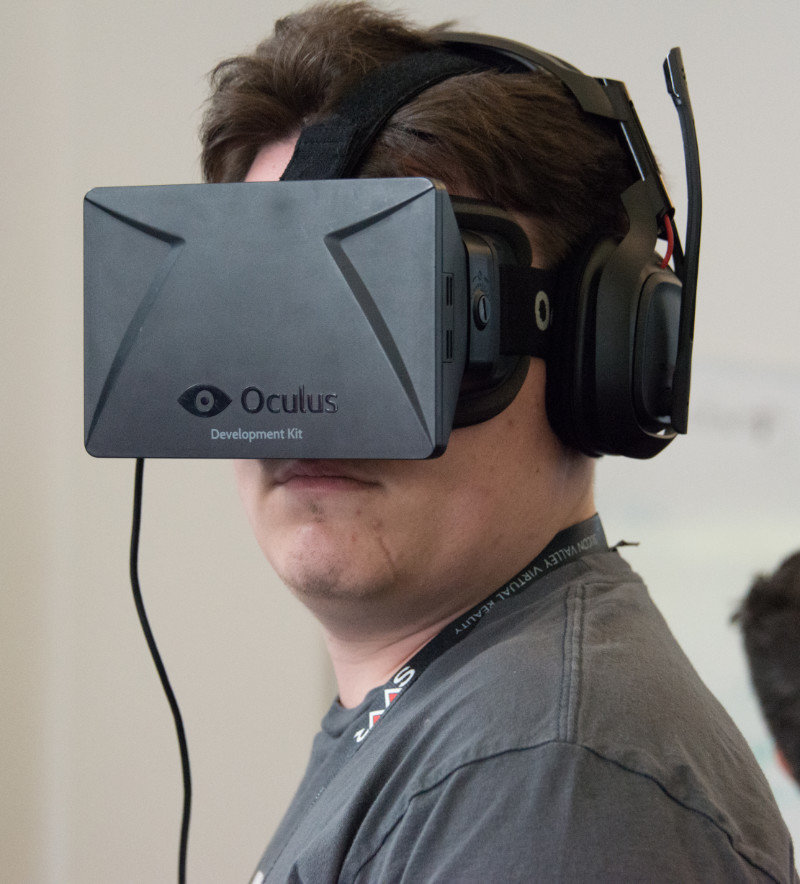
Palmer Luckey and his development version of Oculus Rift in 2014
Source: Wikipedia.org
Oculus had a dispute in the following years with ZeniMax Media, which sued Oculus and Facebook for misusing their intellectual property and ripping off their know-how. Oculus lost the dispute and lost $500 million.
In 2013, Valve Corporation discovered and freely shared a low-latency display breakthrough that allowed VR content to be displayed without lag and blur. This discovery was adopted by Oculus and was used in all of their future VR headsets.
In early 2014, Valve unveiled their SteamSight prototype, a precursor to both consumer headsets released in 2016. It shared key features with the main consumer headsets, including separate 1000-pixel-per-eye displays, low latency, large-area positional tracking, and fresnel lenses.
HTC and Valve announced the HTC Vive virtual reality headset and controllers in 2015. The kit included a tracking technology called Lighthouse, which used wall-mounted „base stations“ for positional tracking using infrared light.
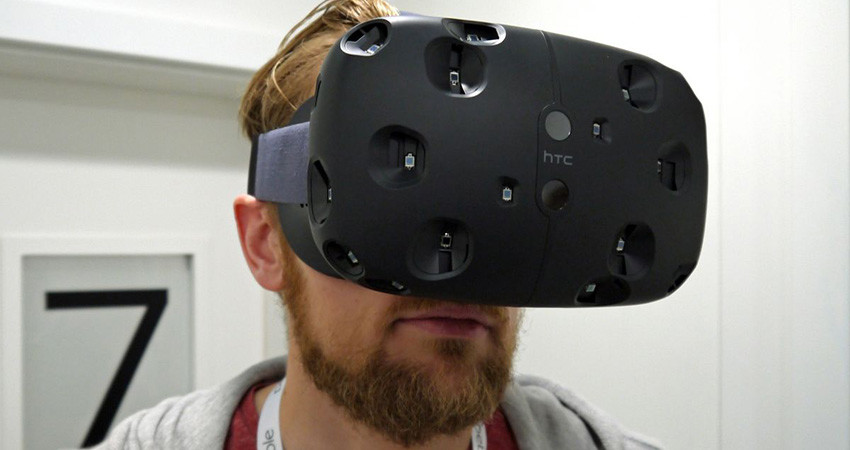
HTC and Valve Unveil HTC Vive VR Headset with Controllers
In 2014, Sony announced Project Morpheus (its codename for PlayStation VR), a virtual reality headset for the PlayStation 4 gaming console. Sony announced in early 2019 that it had sold over 4 million Playstation VR units and just under 22 million VR games worldwide. The current version of the PlayStation VR goggles has a 5.7-inch OLED display with Full HD resolution and 120Hz frequency which is already a very decent display parameter.
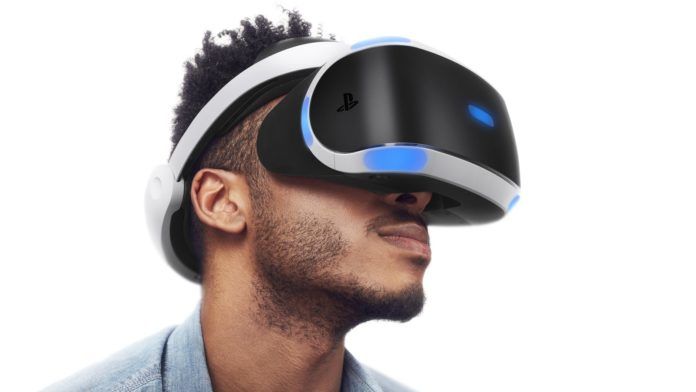
Playstation VR from Sony
In 2016, HTC shipped the first VR headset, the HTC Vive SteamVR. This marked the first major commercial sensor-based tracking that allowed users to move freely within a defined space. This move allows the use of VR to really come to its full potential, allowing people to interact with their physical surroundings, which are identical to virtual reality.
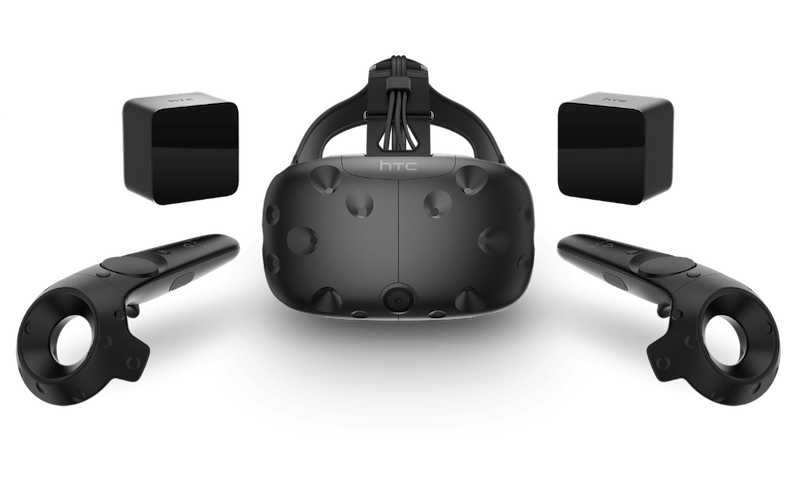
HTC Vive SteamVR
In 2019, we’ve seen a so-called „game changer“ in the form of the Oculus Quest wireless VR headset, which is standalone and does not require a PC. The Oculus Quest sold 180,000 units in the third quarter of 2019 alone and has already attacked the 400,0000 device sales mark overall.
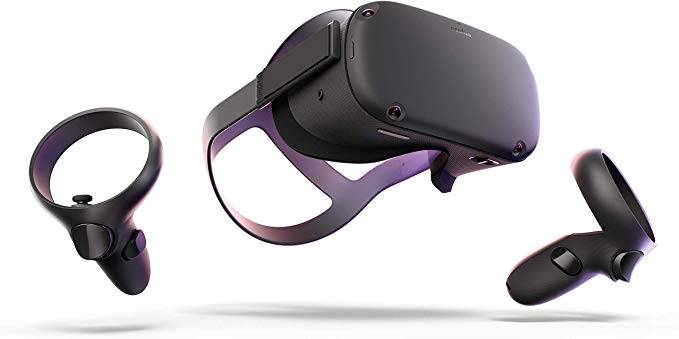
Oculus Quest wireless VR headset
On these goggles, you can try out a variety of interactive games, led by the world’s most famous VR game, Beat Saber. We’ll talk more about these goggles below.
Chapter 2
Current use and potential of VR
Virtual reality isn’t just about games and 360° videos. At the beginning of this article, you could read that VR technology was already used by NASA in the 1980s. Nowadays, virtual reality as a technology is quite different and as it evolves, so does its use and potential as such.
Medicine

Treatment – treatment of disease or disorder under the influence of VR, treatment of memory loss
Surgery – using 3D models for surgeons to plan operations, practicing operations
Teaching – anatomy like never before, with VR you can „enter“ the human body
Using VR to recover memory
Training
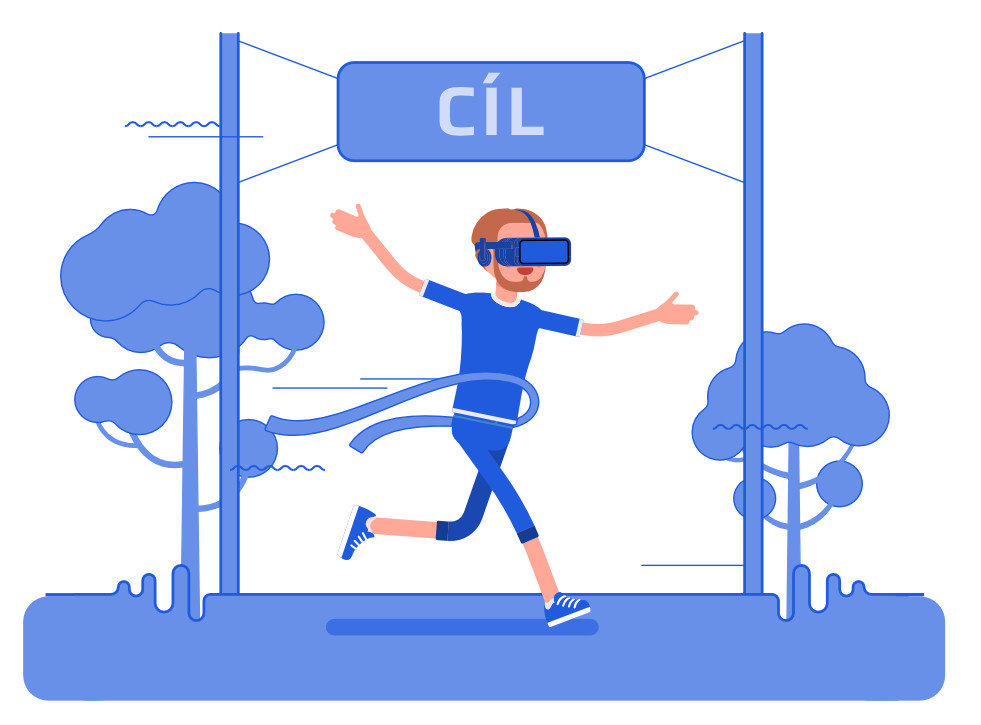
The ability to replicate perfect conditions as in the real performance of an activity is the main reason why VR actually works and is used for training. Training in VR becomes an exact replica of the real environment and conditions. Example of training in VR:
Sports – athletes use a trainer with VR goggles to simulate the perfect conditions of real training
Army – military forces prepare for missions in a VR environment
Soft skills and hard skills – similar to education, training skills and practical tasks, practicing operations and tasks
Americká armáda využívající VR
Education

Education is one of the most important uses of virtual reality technology. VR allows us to simulate a situation in virtual reality that would otherwise be severely costly or even unrealistic.
With VR, we are able to absorb more information and better understand the context through the experience that VR gives us. By education, I definitely don’t just mean for universities and schools, but also for businesses. Examples of using VR in education:
Corporate use – soft skills x hard skills, employee training, HSE, PO, onboarding
Teaching – chemical reactions, laws of physics and other subjects in virtual reality
Simulation of crisis situations – police, doctors, firefighters
Fire safety training in VR
Entertainment

Of course, the entertainment industry is by far the most widespread in terms of VR usability. Even today, most people still think of VR in terms of a game rather than corporate and enterprise use. The main directions of VR use in entertainment are
Gaming – Beat Saber, Call of Duty, SuperHot VR and other games that will be coming to market. I’ll mention the Hellblade game as the icing on the cake: Senua’s Psychosis. The main character of this game suffers from schizophrenia and psychosis, since the developers created the game based on real patients, you have the opportunity to experience how these people feel and act in VR. The game is definitely not for the faint of heart.
Experience – Virtual tours, videos and apps serve as a transfer of the experience in virtual reality so far. A tightrope walk over a canyon, a virtual tour of a cathedral or a lion hunting demonstration in the African bush.
Movies – Interactive movies, documentaries, scary movies and similar videos shot with a 360 camera are very popular at the moment. Their
Live Streaming – Live streaming of concerts, conferences and performances into virtual reality. These events allow you to experience any event live without crowding the ticket people.
Porn Industry – It is one of the most widespread uses of VR technology today. There are around 15 websites dedicated to this topic.
Excerpt from the world’s most played VR game – Beat Saber
VR Meeting

Most of us have attended a meeting over the Internet at some point. The most famous representative may be Skype, Zoom, or Microsoft’s video conferencing. Thanks to VR technology, we are now able to conduct such a meeting in a virtual room while we can each be physically in a different part of the world.
In doing so, you can hear, see, and interact with your counterpart, sharing screens, objects, etc. Several major projects focus on VR Meetings.
Oculus Rooms – only for Oculus platforms with FB account access
MeetIn VR – a platform for businesses to use VR for meetings
Altspace VR – a virtual world that enables VR meetings
Rumii – a platform not only for meetings in VR
Excerpt from the VR meeting through the Rumi platform
Chapter 3
Virtual reality - summary and conclusion
The current VR headsets represented by the HTC Vive and Oculus Rift S for the general public are of very high quality. Some may argue that the image quality is not optimal and the battery life is short.
These minor shortcomings will be eliminated in a number of years, and with a haptic suit, for example, we will be able to indulge in a real VR experience that our eyes can truly believe and our bodies can feel.
Oculus boss presents a plan for the next 5 years (2016)
Conclusion – Virtual reality is the future
Virtual reality has been with us for over 50 years. We are approaching a phase where VR will increasingly become a part of our lives, much like it did with mobile phones.
VR technology still has a long way to go, so we can look forward to higher-resolution headsets, longer battery life, lower latency, and lower purchase price. So put the goggles on and let’s get to the experiences and virtual tomorrows!




